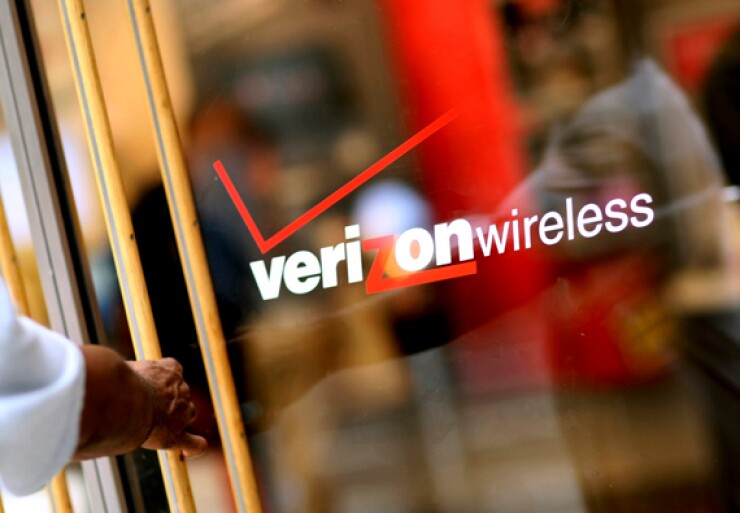Turns out Verizon’s customers are better credits than either Fitch Ratings or S&P Global Ratings realized.
In August, Fitch rating agency conducted a review of the wireless carrier’s nearly $10 billion of outstanding bonds backed by device payment plans; it determined that defaults were lower than it had expected. And S&P has trimmed its loss expectations for all seven obligor tenor banks.
This allows Verizon to offer fewer investor protections on its next offering of bonds backed by device plans. The $1.23 billion Verizon Owner Trust 2018-A will issue four tranches of notes. The two senior tranches, totaling $1.1 billion (one floating-rate, the other fixed-rate), benefit from 21.25% credit enhancement and are provisionally rated triple-A by Fitch, S&P and by Moody's Investors Service, which has never previously rated a handset finance securitization by Verizon.
That’s more than eight percentage points less than the enhancement on the AAA-rated tranches of Verizon’s three prior deals.
Credit enhancement on two tranches of subordinate notes is also lower. The $75.8 million of Class B notes, which are rated AA by Fitch, AA+ by S&P, and Aa1 by Moody's, have 15.75% enhancement, down from 23.06% for the prior three deals. And the $58.6 million of A/A+/Aa3 rated Class C notes have just 11.5% enhancement, down from 16.5%.
Bank of America Merrill Lynch is the lead underwriter.

Verizon issued its first device payment plan securitization in 2016, and Fitch has relied on historical performance data on the carrier’s unsecuritized contracts dating back to 2007 to model defaults. The rating agency sees customer “tenure,” or the length of time it has had a contract with Verizon, as a key predictor. After analyzing the performance of securitize payment plans, it has lowered its default assumptions for two bands of tenure, customers who have had contracts with Verizon for seven to 12 months (base-case defaults of 10% vs 12% previously) and those that had contracts for 61 months or more (1.25% vs 1.5%).
Using these new assumptions, and taking into account the mix of customers in the pool of collateral, it expects defaults to be in the range of 3.60% to 3.80%, in its base-case scenario.
Previous vintages have sustained cumulative defaults in the range of 2.9% to 3.7%, the presale report states.
So while the credit quality of the collateral for VZOT 2018-A is “of overall consistent credit quality” to the carrier’s previous deal, VZOT 2018-A, Verizon’s initial expectations for losses are lower.
The weighted average tenure of the new deal is two months lower, at 94 months. And the level of insured receivables that are insured is marginally lower at 52.1% vs. 52.2%. Fitch considers insurance to be “credit positive,” because customers without insurance may have to pay off two phones simultaneously if they lose or break their phone and have to purchase a replacement.
The primary way that Verizon reduced credit enhancement on the notes in the new deal is by lowering subordination. It issued more senior notes in relation to the overall size of the deal and this lowered subordination for the senior notes to 9.75% from 13.05% in the prior deal; subordination for the Class B notes is just 4.25%, versus 6.56% for the Class B notes of the prior deal.
The reserve account for the new deal is unchanged at 1%, but, unlike prior transactions, it will not increase once the notes begin to repay principal.
Overcollateralization, or the amount of excess collateral backing the notes, has also been trimmed to 10.5% in the latest transaction from 15.5% in the prior transaction.





